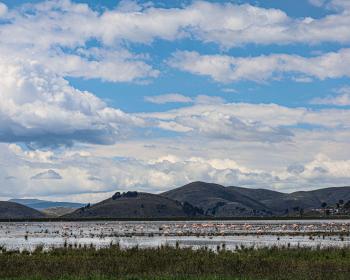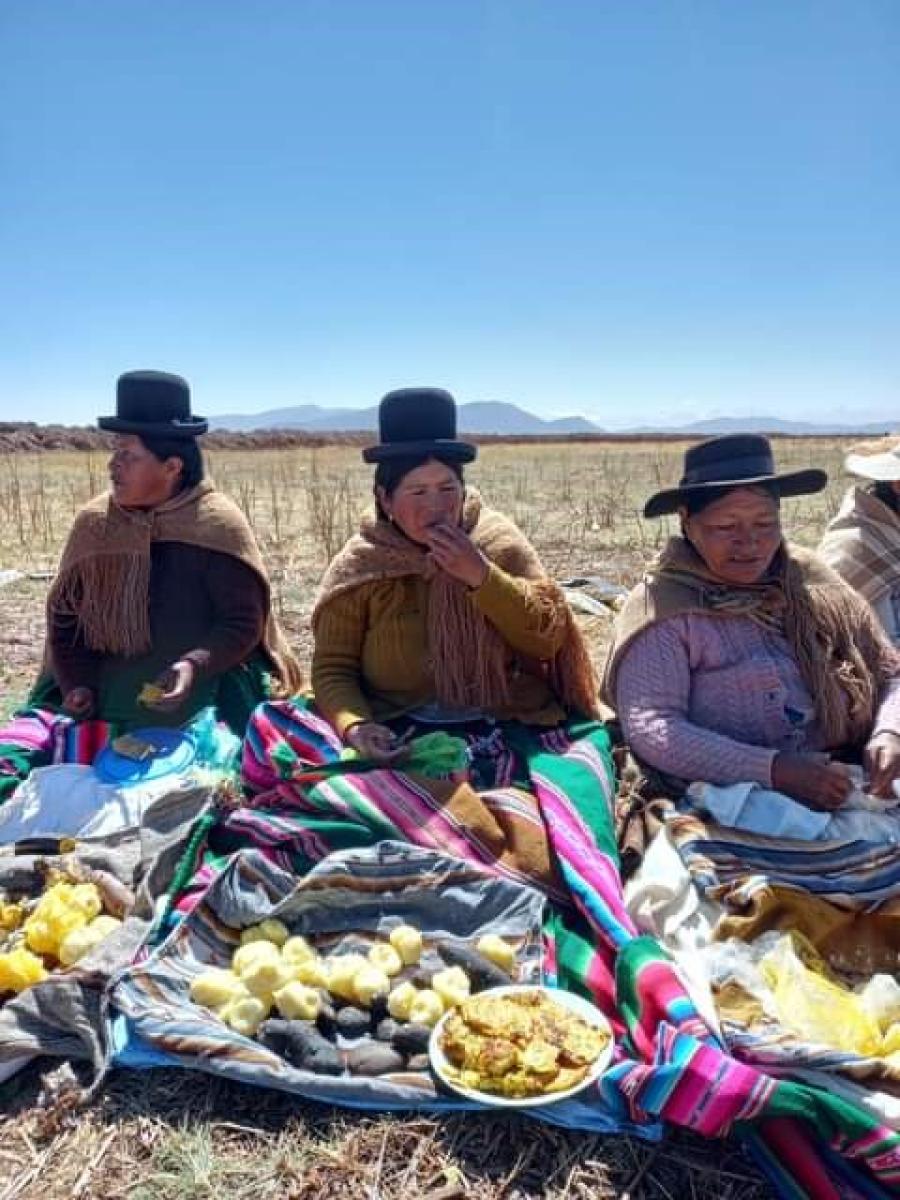Women as the connecting link
Efforts to provide cosmopolitan health services to indigenous rural populations in developing countries are closely tied to the emergence of health as a global priority following World War II. In 1946, the World Health Organization (WHO) was created as a separate agency out of fragments of the League of Nations. Like public health movements in England in the late nineteenth century and in the United States in the early decades of the twentieth century, early WHO efforts focused on the eradication of epidemics.
The optimism generated by advances in health status in first world countries and the apparent similarity of disease patterns in developing countries to those experienced in first world countries earlier in this century, combined with the exposure of World War II troops to "far away" countries, fueled a naive but genuine desire to assist poor and starving brethren in distant parts. However, this desire to help established patterns for provision of third world medical care that we are still striving to undo.
Some of the assumptions implicit in early health care efforts include:
a) Cosmopolitan (or Western) medical care fills a void which cannot be met within the developing country's social fabric;
b) Developing or third world countries will modernize in ways similar to first world countries; and
c) The efficacy of cosmopolitan medicine is so great that traditional health practices will be replaced and die out within a short period of time.
Only after several decades of work have the errors in these assumptions become clear.
For example, development patterns in these countries are complicated by manifestations of colonialism and paternalism. Many health projects imposed from the outside have failed. Studies, particularly those focusing on the adoption of innovation by community members, have revealed the gap between theory and reality. And the stubborn persistence of traditional health practices shows that there is more than one standard by which the efficacy of a practice is judged.
Even planning at WHO has shifted from a "top-down" to a "bottom-up" approach within the last five years. WHO now solicits country plans which outline not only national goals but ways in which to work with expatriate agencies to achieve these goals. These country plans and the national leadership of third world countries determine WHO policy for world health. National plans are expected to reflect community-based priorities, and, in fact, many of them do. Likewise, expatriate collaborators are expected to develop programmatic goals which are in keeping with national goals.
Any health service plan should focus on the community as the functional unit for delivering basic health services. It is also true that if there is to be an effective integration of traditional and cosmopolitan health practices, it is necessary to understand the community as a social unit before the introduction of any innovations. An understanding of the needs and resources of the community is the best way of ensuring that the services delivered are low cost.
On the Bolivian altiplano, indigenous plants are used extensively in the treatment of illness. Knowledge about the curative properties of plants is passed down from mother to daughter through the generations. In these communities of 250-500 people, women are, in practice, the primary deliverers of care and the protectors of the health and well-being of their families. As such, these women offer an effective, yet underutilized, resource for extending formal health care into local communities.
Incorporating the skills of these women appears to be the most logical, cost-effective, and sustainable strategy in developing and managing community health programs for providing care. Basic to this strategy is the recognition of established community patterns for health care, and a willingness to have community members make reasoned, measured judgements about the efficacy of particular health interventions.
The first step in carrying out such a plan is the development of an individual health record, and the selection of one or several pilot communities. The individual health record method enables an individual to describe past and present health events for each family member, including those born to the family but now deceased. The events to be recorded include pregnancies and births, miscarriages, the death of children, illness, and injuries occurring to family members.
Records show the preferred treatment for each ailment, whether indigenous or cosmopolitan in origin. Entries include the use of herbs, herbal teas, plants and plant-derived substances, and medicines, both traditional and cosmopolitan, purchased at any of the town or urban markets. Thus, the health record allows one to monitor patterns of health and illness in the family and evaluate the effectiveness of particular practices.
It is important that the family record keeper be identified. A number of criteria might be used: among them, age, sex, or literacy. In my judgment, however, it is most important to choose as a family record keeper the person who has primary responsibility for the health of the family members, namely, the mother.
In rural Bolivia, where basic health services are not readily available to the vast majority of the population, mothers are already the primary providers of health care. Appointing the mother as her family's record keeper accords status to her work. Recognizing mothers as the care providers of choice and giving them aids to monitor their health and that of their family members is a most reasonable means to improve health at the community level.
In addition, in Bolivia, healthy mothering has for many years been an objective of the government. Since 1955 the Division of Nutrition has provided supplementary foods through community-based mothers' clubs in an effort to improve the nutritional status of low-income women of childbearing age and their young children. These clubs provide a vehicle for the promotion of health care. Expanding the existing role of the clubs would be culturally and politically an expedient means for extending basic health care services to highland rural communities.
After the record of past and present health events is recorded, the individual family representative receives instruction in maintaining the record on an on-going basis. Current episodes of morbidity and specific interventions, whether cosmopolitan or traditional in practice, are written into the record and also on a smaller attached tear sheet. The latter is transferred to the community health record.
A copy of each health record is collected at the community level. This information is abstracted and compiled so that the most prevalent and serious conditions which are amenable to treatment are made known to the members of the community. Thus, the community health record allows the whole community to learn about patterns of health and illness in their community and enables them to think critically about how best to improve their own health status.
In due time, the community level data may be tabulated at the sub-area and regional levels for use in planning and evaluation. By proceeding in this fashion, the risk of a negative reaction to the now-familiar cry of "one more survey" is minimized. Community members are recruited as participants in monitoring their own health; the data from the family health record are the tools by which that objective is accomplished.
At the community level, a community health worker assists in the initial completion of records, monitors record updates on a bi-weekly or monthly basis, and collects a tear sheet tab from each family record keeper for each incident of morbidity (or mortality) and the corresponding intervention.
The community health worker is the liaison between the community and the health auxiliary. Each health auxiliary, in turn, is responsible for five to eight villages, depending on population size and geographic boundaries. The health auxiliary visits each community at least monthly to administer immunizations, meet with and provide support to the community health worker, collect and monitor community health records, deliver periodic instruction to community health workers, and collaborate with other health auxiliaries. The health auxiliary also serves as the link between communities and the district representatives of the Ministry of Health.
The district representative coordinates the efforts of five to ten health auxiliaries, collects records from them, and responds to their requests for assistance in carrying out health interventions or providing ongoing health training. The district level representative also works collaboratively with personnel at the district office (usually a small hospital) and the administrator responsible.
Remuneration in a program such as this is both formal and informal. District level employees and health auxiliaries receive salaries set by government ministry policies. The community health worker is not paid a salary, but reaps the benefits of training in health service management, as well as the status associated with being an active participant in a national level project. As there is a dearth of roles for effective participation in the larger society and access to the print media is relatively constricted, a role which gives a person access to both is highly valued.
For women, the rewards are probably the greatest. Through the individual health record, they receive assistance in monitoring and improving the health of their families. Studies of medical record-keeping have shown that individuals keep their own records at least as well as physicians, if not better, precisely because it is a record of their health, of their own life. As Bolivian mothers are already entrusted with the health of their families, it follows that their interest in accurate and detailed record keeping will be high. In fact, during field studies in 1982, mothers routinely displayed a packet containing vital records of each family member.
The program is an effective way to link cosmopolitan and traditional systems of medicine at low cost. However, it does have a few weak links. The obstacle which is most often pointed out is the limited literacy of women in the highlands. True, the Indian population was not allowed to learn how to read until the Land Reform Revolution of 1952. Since that time, primary schools have been established in every wayside community; literacy has grown even in the most rural areas. Most families have at least one grown son or daughter who can read and write; if Mother cannot do it herself, keeping the individual health records can be a family project. If that too fails, the community health worker can assist in recording health events reported to her by the family.
The potential drawbacks, however, are far outweighed by the tremendous advantages of this approach. First, it is truly a community-based approach. Second, the women have a lifetime of insight into the Aymara culture and are familiar with traditional health practices. Third, analysis of the health records will allow workers to identify the most serious and treatable conditions in these communities and develop interventions which constitute an appropriate response to these conditions. Fourth, the records kept are likely to be accurate, since they are vitally important to the record-keepers. Fifth, the basic strategy of the program (i.e., the use of individual health record cards) is extremely low cost. Using community health records to determine necessary strategies is likely to keep costs low, because only those interventions deemed necessary will be employed. Finally, as people in the community come to understand their own health patterns better, they will be better able to choose between different medical interventions.
Ultimately, the Aymara women constitute a rich resource for extending formal health care into rural communities and for linking cosmopolitan medicine to traditional patterns of care in an otherwise scarce-resource environment.
Article copyright Cultural Survival, Inc.



